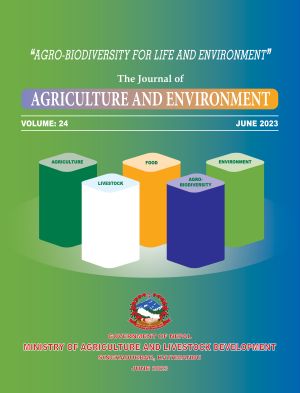Nepalese Fine and Aromatic Rice Landraces: A Review
DOI:
https://doi.org/10.3126/aej.v24i01.58190Keywords:
Aromatic, basmati, landraceAbstract
With the recent issue of Geographical Indication (GI) tag claim by India on Basmati rice, Nepalese rice sector got an urgent call to conserve and promote fine and aromatic rice landraces. Fine, medium, coarse landraces were further classified into aromatic and non-aromatic. Some of the aromatic landraces popularized by their local dialect names as Basmati anadi, Basmati anpjhutte, Choti basmati, etc. were cultivated in diverse environment by local farmers but utilization in national rice improvement program is insufficient. Just handful of landraces were used as parental lines to develop improved varieties viz. Jarneli in Khumal-2, Pokhreli masino in Khumal 4, Khumal -5 and Palung 2, pureline of Jethobudho as Pokhreli jethobudho, pureline of Lalkabasmati as Lalkabasmati. With the prevailing trend of fast-track registration of the exotic improved lines, our grassroots level efforts to study the genetic makeup and unique attributes of our landraces are overshadowed. However, Jarneli, Kalo marshi, Kalo nuniya, Mansara, etc. were found to be popular for traits nutritious, medicinal, abiotic stress tolerance and resilience to low fertility soil. Furthermore, the modern tools of molecular characterization are yet to be utilized prominently to identify such valuable genes and understand their phylogenetic diversity rewarding for future rice breeding program.




